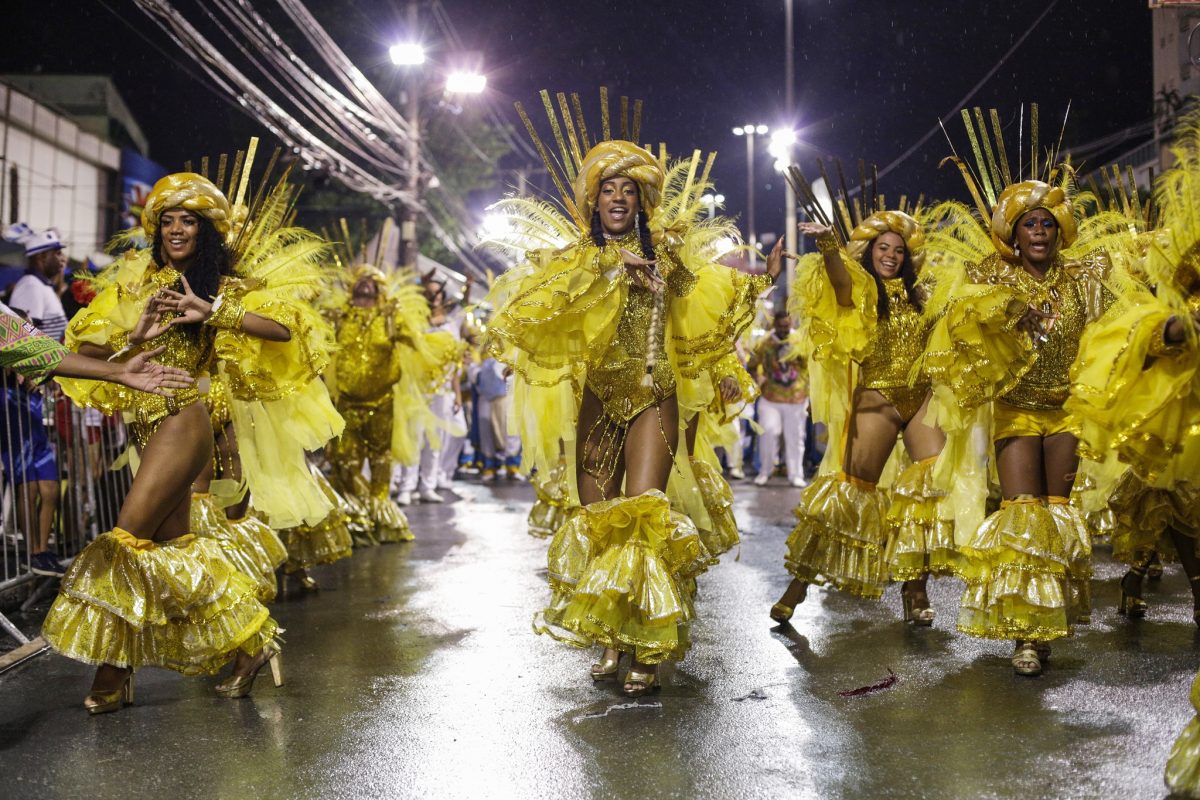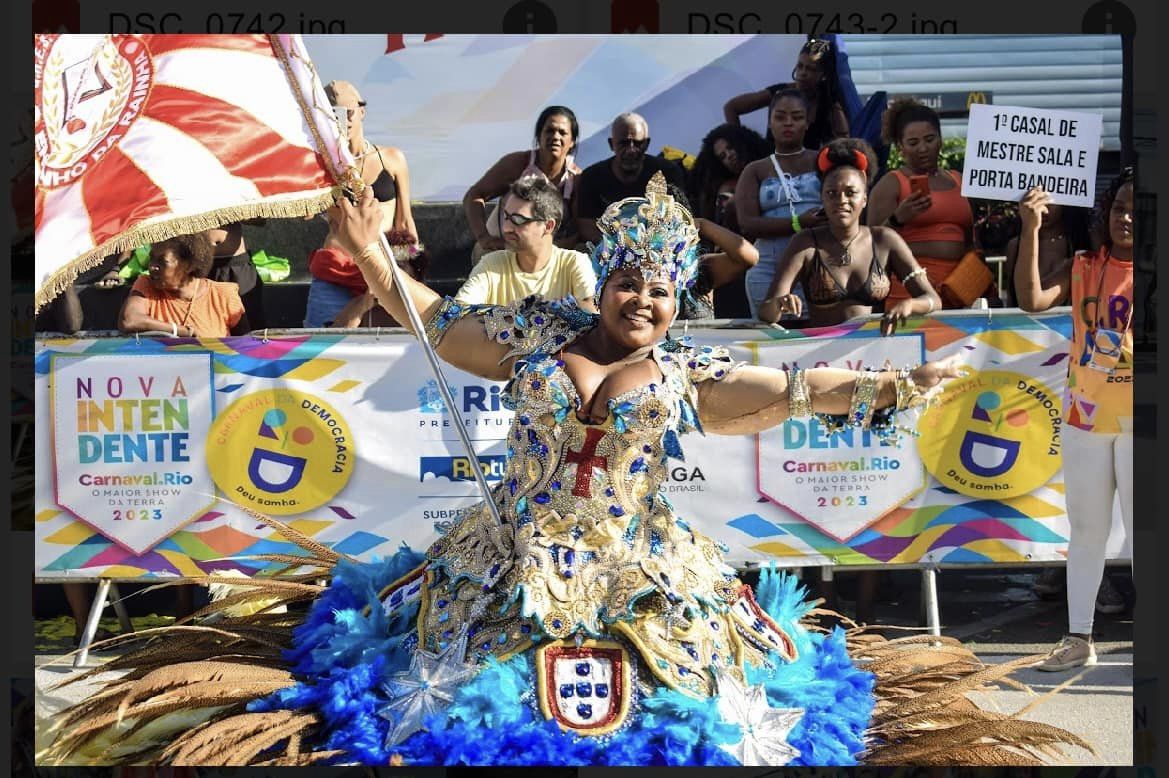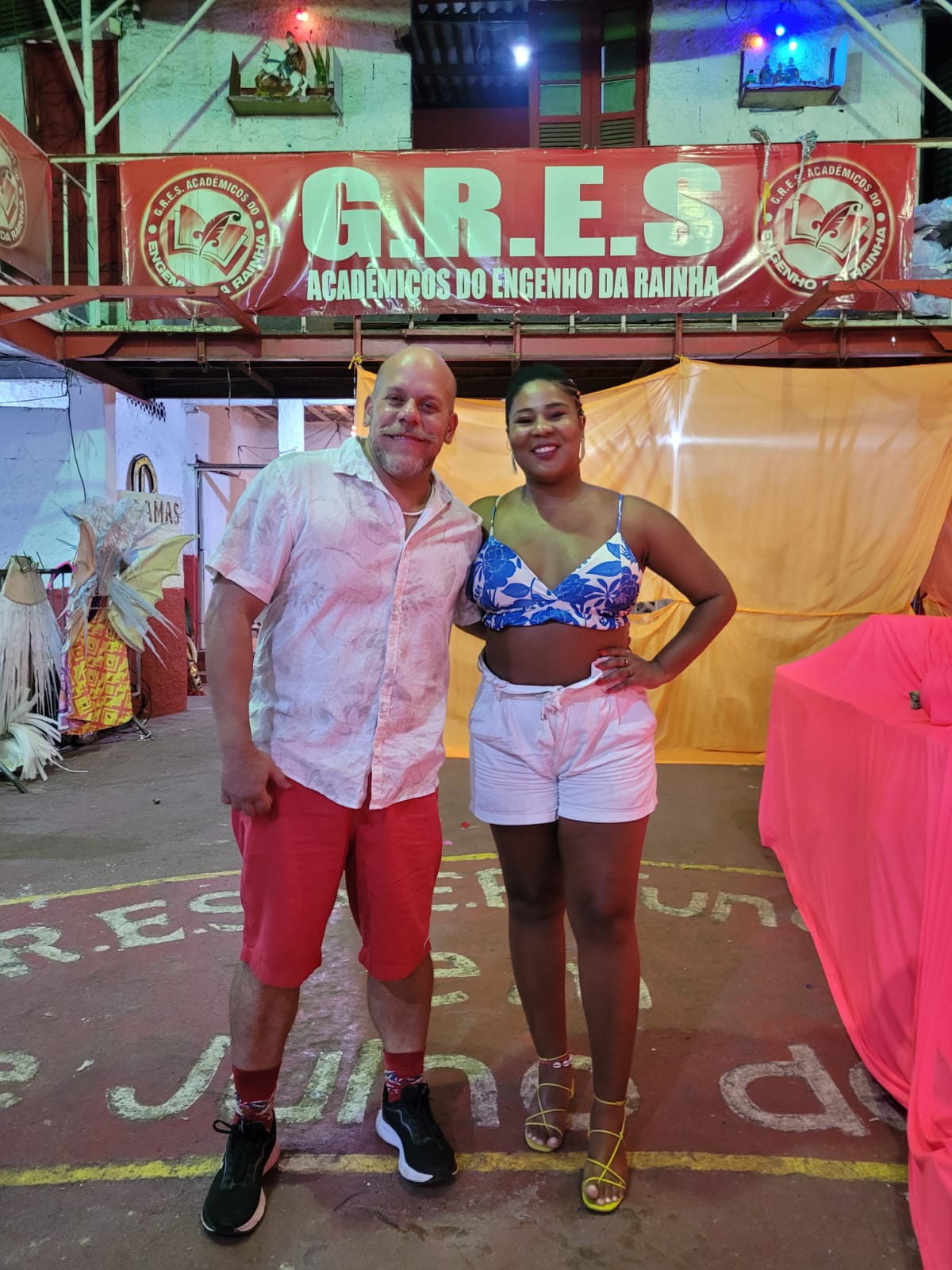
Clique aqui para Português
This is the second in a series of three articles about carnival traditions in Rio’s favelas and peripheries, respectively: the Bate-Bola clowns, an indelible tradition in the North and West Zones, and Greater Rio’s Baixada Fluminense region; the Bronze and Silver Series access groups, mostly samba schools from favelas; and Bloco Se Benze Que Dá (SBQD), a street carnival parade from Complexo da Maré. The three represent the unequal and disparate Rios that persist in (re)existing within a single city in the form of art and glitter.
Away from the spotlights of the Marquês de Sapucaí Sambadrome, the carnival of the favelas and peripheries reveals the strength of community work as a builder of the festivity. In this scenario of contrasts, residents of the favelas and peripheries of the city’s Metropolitan Region are responsible for safeguarding the traditions and popular culture of carnival. Whether out of love, passion, or activism, no one gives up on taking carnival to the streets, even with few resources.
Silver and Bronze Series 2024: Irreverence and Social Critique Return to Intendente Magalhães
The Rio Carnival samba school parades are not restricted to the Marquês de Sapucaí Sambadrome. The samba schools from the Silver and Bronze series, for example, traditionally parade on Estrada Intendente Magalhães, where they will once again parade in 2024. In 2023, due to violence, the parades were relocated from this beloved stage of Rio’s samba to Avenida Ernani Cardoso, then nicknamed The New Intendente.
In 2024, the Intendente carnival will showcase the “Supercarnival of Sustainability,” an innovative project that combines joy and revelry with environmental responsibility. Ecopoints will be set up along Avenida Intendente Magalhães to ensure proper waste management and carbon emissions neutralization. The ambitious goal is to recycle over 260 tons of materials, demonstrating carnival’s commitment to environmental preservation. In total, 73 samba groups make up the Superliga Carnavalesca, distributed among the Silver (32), Bronze (22), and Evaluation Group (16)—in addition to affiliated schools that do not parade. The parades of all these schools take place between February 11 and 17.
G.R.E.S. Acadêmicos do Engenho da Rainha: Morro do Engenho Takes Over Intendente
In the Silver Series, at least 20 groups hail from favelas in the Rio de Janeiro Metropolitan Region, accounting for over 60% of the series’ schools. Among them is Grêmio Recreativo Escola de Samba Acadêmicos do Engenho da Rainha, whose headquarters are located at the foot of Morro do Engenho da Rainha, with approximately 5,000 residents in the North Zone.

This year, Engenho da Rainha’s red-and-white-banner school will take Tupi mythology to Intendente: Rudá, the creation of the world in a tale of love. The samba school will recount the legend of Guaraci and Jaci—the Sun and the Moon, who “to be together, had to create Rudá, love, since it did not know light or darkness, thus uniting the Sun and the Moon at dawn,” explains carnival producer Alexandre Gonçalves.

In 2024, just like in 2023, the Engenho da Rainha plot was developed in partnership. In 2023, carnival producer Alexandre Gonçalves developed the parade theme with Pauline Abreu, the first Black carnival producer in Rio’s carnival in decades. In 2024, he teamed up with Felipe Midass.
Despite being a Black celebration, there are still few Black women carnival producers in Rio de Janeiro. In this context, Pauline Abreu and Winnie Nicolau, carnival producer of the Pimpolhos da Grande Rio children’s samba school, stand out as role models.
“People always misunderstand us, don’t they? Especially in this area of carnival. I’m not a passista, not a samba dancer! And I don’t say this with any sense of belittlement. On the contrary, I make the costumes with all my love and appreciation. Everyone has an essential role in the world of carnival… However, I’m from the creation and research line. I want to be able to work and be recognized in this area. It’s exhausting, this view of Black women in carnival, always putting her as a participant and not in a place of creativity, production, and carnival construction.” — Pauline Abreu
Like other favela schools in the Silver and Bronze series, Engenho da Rainha’s red and white samba school has few resources but a dedicated community. There are only eleven people to produce all the floats and costumes, with four seamstresses at the school’s headquarters and five other workers in the workshop, located in the city center.
“We’ve got a lot of love for this school. I joined to help the association become more secure, because everything was very insecure… And I’ve been here for over 50 years now. Me and a group of guys built this ‘terreiro’ here.” — Luís Fernando, known as Tio Fuzaka
A resident of the Engenho da Rainha neighborhood, Luís Fernando grew up in the vicinity of the school’s headquarters, which used to be located inside Morro do Engenho. In the 1970s, the group built, through collective action, the new headquarters, entirely adorned in red and white, including an altar dedicated to Saint George.
In 2024, the group dreams of achieving first place to move up to the Gold Series and finally be able to parade down Sapucaí for the 2025 Carnival. In 2023, the winners of the Silver Series were the Sereno de Campo Grande, União de Maricá, and União do Parque Acari schools. The Silver Series schools will perform on February 13 and 16, while those in the Bronze Series will take to the Intendente arena on February 12 and 17.

This is the second in a series of three articles about carnival traditions in Rio’s favelas and peripheries
About the author: Tatiana Lima is a journalist, popular communicator and journalism coordinator of the Fala Roça favela newspaper from Rocinha. She has a masters degree in Media and Everyday Life from the Fluminense Federal University (UFF) where she is currently working on a PhD in Communication. A member of Complexo do Alemão’s Researchers in Movement Study Group, she also teaches reporting techniques at the Grassroots Communication Course of Núcleo Piratininga de Comunicação (NPC). A Black feminist born and raised in Favela do Quitungo and Morro do Tuiuti, Lima currently lives in Rio’s urban periphery.
